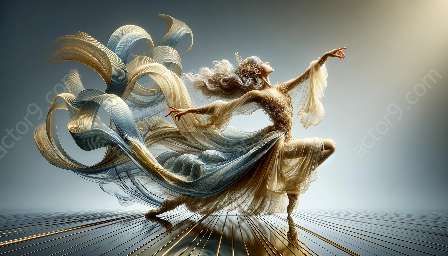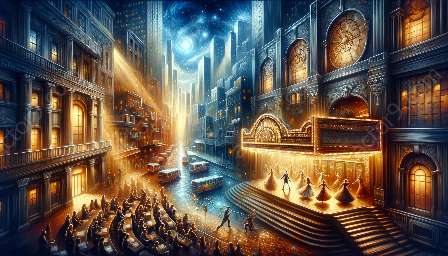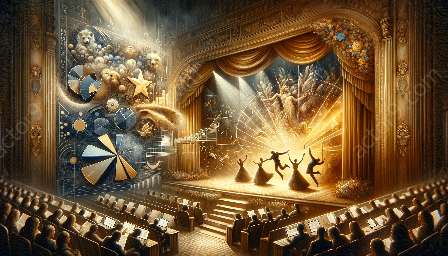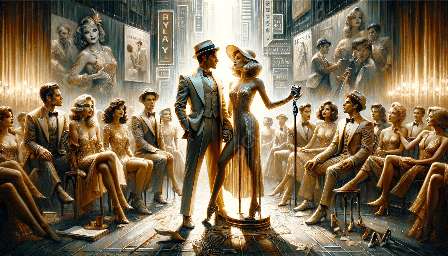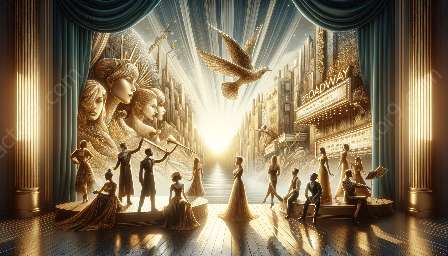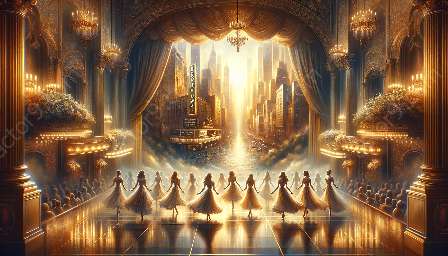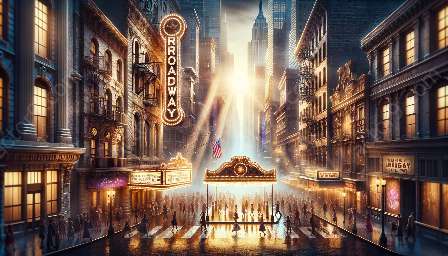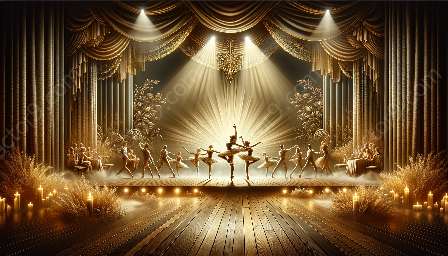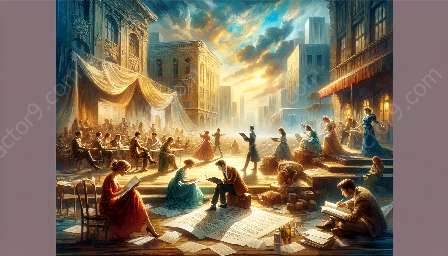When it comes to the world of musical theater, choreography plays a pivotal role in bringing stories to life through captivating dance and movement. In this article, we'll delve into the intricacies and significance of choreography within the context of Broadway and the art of musical theater.
Understanding the History of Broadway
Broadway, often referred to as the pinnacle of American theater, has a rich and storied history dating back to the early 20th century. It emerged as a hub for theatrical productions, particularly musicals, and quickly gained recognition for its influential role in shaping the performing arts landscape. As the epicenter of musical theater, Broadway has served as a breeding ground for innovation, creativity, and artistic expression, with choreography standing out as an integral component of its allure.
Exploring Broadway and Musical Theater
Before delving into the role of choreography, it's essential to recognize the unique nature of Broadway and its relationship with musical theater. Broadway productions encompass a wide range of genres, from classic revivals to contemporary works, all of which rely on captivating performances to engage audiences. Musical theater, in particular, draws strength from its ability to amalgamate music, acting, and dance, ultimately creating a harmonious spectacle that resonates with theater enthusiasts around the globe.
The Interplay of Choreography and Musical Theater
The art of choreography in musical theater lies at the heart of the storytelling process. Choreographers are tasked with translating narratives and emotions into visually compelling movements that transcend language, effectively communicating the essence of a production to audiences. Their meticulous attention to detail and creative vision shape the way stories unfold on stage, breathing life into characters and settings through the fluidity of dance.
Enhancing Emotional Narratives
Choreography serves as a powerful vehicle for intensifying emotional narratives within musical theater. By seamlessly integrating dance into performances, choreographers have the capacity to convey a spectrum of sentiments, from joyous celebrations to heart-wrenching tragedies. Every leap, twirl, and gesture is carefully crafted to evoke visceral responses, allowing audiences to immerse themselves fully in the unfolding drama and connect with the characters on a profound level.
Pushing Artistic Boundaries
Furthermore, choreography serves as a catalyst for pushing artistic boundaries and redefining the norms of storytelling in musical theater. With each new production, choreographers strive to innovate and experiment, infusing performances with fresh dynamics, originality, and cultural influences. Through the intricate fusion of different dance styles and techniques, they pave the way for groundbreaking interpretations of classic tales and modern narratives alike.
Audience Engagement and Spectacle
One cannot overlook the pivotal role that choreography plays in engaging and captivating audiences within the realm of musical theater. The physicality and visual allure of dance sequences inject a sense of grandeur and spectacle into performances, leaving a lasting impression on theatergoers. Whether it's a high-energy ensemble number or an intimate pas de deux, choreography heightens the overall sensory experience, creating unforgettable moments that define the magic of live theater.
The Legacy of Choreography on Broadway
Looking back on the history of Broadway, it becomes evident that the legacy of choreography has left an indelible mark on countless iconic productions. From the groundbreaking work of Agnes de Mille in Oklahoma! to the revolutionary choreography of Bob Fosse in Chicago and Cabaret, choreographers have continuously shaped the landscape of musical theater, influencing subsequent generations and setting new standards for excellence.
Conclusion
The role of choreography in musical theater remains an integral and irreplaceable aspect of the Broadway tradition. As an art form that transcends linguistic barriers and sparks visceral responses, choreography serves as a cornerstone of storytelling, enriching the tapestry of musical theater with its boundless creativity and emotional resonance.




